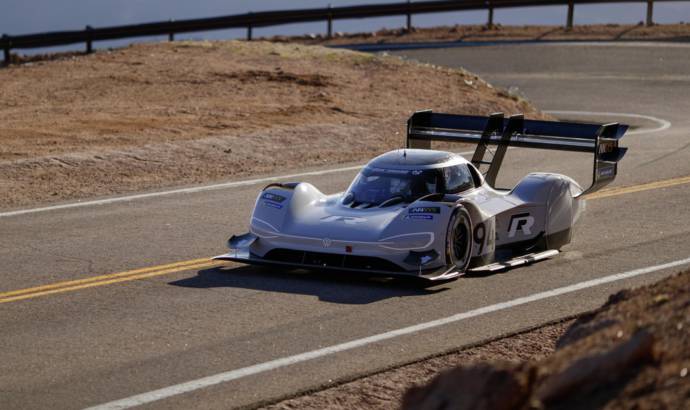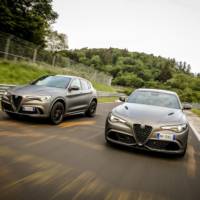Volkswagen wants to improve its image in the US with a new record attempt on the famous Pikes Peak. To be sure that this challenge is a success, Volkswagen developed a special supercar, that is all electric: I.D. R Pikes Peak.
As you would easily guess, I.D. comes from Volkswagen’s newly established brand, dedicated exclusively to electric cars.
The corresponding paragraph in the regulations for the Pikes Peak International Hill Climb is clear: Should a participant in the most famous hill climb in the world be forced to suspend their run for safety reasons – for example, should it suddenly start to hail or another car require recovering – they have exactly 20 minutes, in which to prepare for their second attempt and to return to the start line.
This time frame forced Volkswagen to create a supercar that can charged faster than a conventional car.
The electric drive for the I.D. R Pikes Peak generates a system performance of 500 kW (680 PS). When the Volkswagen Motorsport team attempts to break the existing record for the electric car class on 24 June, it must be ready for countless imponderables. These include a possible interruption.
The best results came courtesy of a lithium-ion battery, which, in the I.D. R Pikes Peak, is split and located in two blocks next to and behind the cockpit. The battery has a particularly high power density. “In the case of a racing car, you are not looking for maximum range, but the highest possible power output,” says Bertram, explaining the differences between the racer and production cars. The I.D. R Pikes Peak is capable of accelerating from 0 to 100 km/h in 2.25 seconds – faster than a Formula 1 car. The 19.99-kilometre route includes 156 corners – meaning the battery must be able to cope with roughly the same number of acceleration phases.
During development, particular attention was paid to the way the battery behaves during the charging process at the racetrack. This process requires a sophisticated strategy. Volkswagen Motorsport works with two rapid-charging systems at the same time in the start area on Pikes Peak, each of which supplies the battery in the I.D. R Pikes Peak with fresh energy at a relatively low total output of 90 kW.
Volkswagen Motorsport is also using innovative methods to generate the energy required to charge the battery. Because the temporary paddock, located at a height of 2,800 metres above sea level, does not have a suitable power supply, a conventional looking generator is used to generate the electricity required by Volkswagen Motorsport. However, unlike conventional generators, this one does not run on diesel – it uses Glycerol. This liquid – a sugar alcohol, which is a waste product from the production of bio-diesel, for example – combusts with virtually no harmful exhaust fumes or residues. Glycerol itself is non-toxic and is even permitted as an additive (E422) in the food and cosmetics industries.



